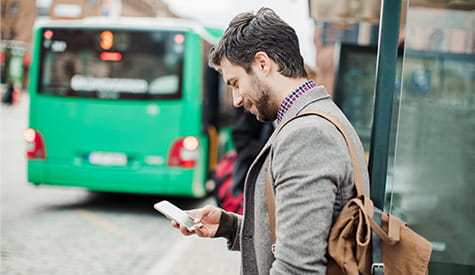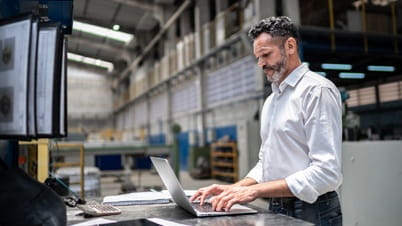Smart mobility is critical to the smart city and plays an important role in sustainability. ALE technologies are helping cities achieve these goals.

Urban transport is fundamental to the function of every major city. As one evolves, so too does the other. That said, there are no smart cities without smart mobility.
Improve service and reduce pollution: Difficult but not impossible
According to a 2020 UN report, by 2050, 68% of the world’s population is projected to live in urban areas . Additionally, a report from the European Commission indicates that urban mobility accounts for 40% of all CO2 road transportation emissions.
To address the surge to urban areas, cities must manage people density and improve transportation services. This means implementing new transportation options that offer alternate traffic flows, and provide real-time information to optimise users journey’s by helping them to select the right transportation mode to ensure a fast, efficient commute.
The second part of the challenge will require sustainability and environmental solutions including the development of new virtuous transport systems to reduce carbon footprints, cut pollution, and improve air quality.
Smart mobility, a foundation for smart cities
Smart urban mobility is essential for smart city evolution. In fact, smart mobility is the breath of the modern city. It is a critical to the successful economical function of the city and it plays an important role in sustainability.
As smart cities search for new transport solutions to meet their objectives of reducing accidents, congestion and delays, and pollution, Mobility as a Service (MaaS) provides an opportunity for smart cities to take a step in the right direction.
MaaS offers multimodal/intermodal transport solutions that group options such as public and private transport solutions; for example, soft/micro-mobility, carsharing, ridesharing for an efficient door-to-door journey, optimising the itinerary, and providing the right transport option for a problem-free commute.
Connected technology and digital transformation make smart city evolution possible by integrating real-time information and communications technologies, enabling the Internet of Things (IoT) to automate processes. With these technologies, cities can engage and communicate with commuters to provide real-time information. Technology can also reinforce collaboration between stakeholders, such as service providers, and transport operators and authorities, to enhance the efficiency and performance of services while introducing innovation and new uses.
Creating smart mobility/smart city synergy
Alcatel-Lucent Enterprise (ALE) technology and services offer the right communications and network solutions to interconnect business processes, devices, and users.
ALE solutions enable MaaS and smart mobility in several ways. They provide the connection layer between applications from different providers, services, devices, processes, and users. As well, the data network is essential to transport and secure information and provide advanced services using the Wi-Fi infrastructure.
Communications services such as voice and video sessions, text messages, file sharing and notifications can be integrated into the ecosystem through APIs. And applications and devices can provide real-time interactions and enable call to actions from the MaaS providers’ mobility applications.
With location-based services (LBS), asset tracking, geolocation based on the Wi-Fi infrastructure, and IoT interconnection, ALE solutions collect the right information, and transport accurate data throughout the process to make it available to the right stakeholder.
For MaaS, the eTicket or smart ticket is vital. The ALE LBS and Asset Tracking solutions can be implemented to provide passenger tracking with Be-in/Be-out from the transportation system. The Bluetooth® Low Energy (BLE) beacons deployed at the bus stations, metro/train stations, onboard the bus/metro/train car, or the end user mobile application, will send the beacon/passenger ID to the back-end platform to calculate the end-to-end trip with the right fare. Check out the “Implitick” application video, co-developed with Strasbourg University, to discover how LBS can be integrated into a MaaS application for account-based ticketing to offer a seamless multimodal journey.
The success of smart mobility and smart cities is dependent on connectivity, digitalisation, and real-time communications and collaboration. These elements will enhance smart mobility to help smart cities achieve their goals to achieve less pollution, less congestion, and improved sustainability.
Learn more about Alcatel-Lucent Enterprise transportation solutions.
Latest Blogs

Supply chain resilience and business adaptability
Strategic supply chain resilience and business adaptability to thrive in the face of adversity

Solve education challenges with a modern campus network
A modern campus network helps streamline operations, reduce costs, and offers a safe and caring place to work and study.

Revitalise education with a modern campus network
A modern, campus-wide network upgrade aligns capabilities with academic, research and business priorities today and tomorrow.

Education today: Why modernising campus networks is a must
Educational institutions worldwide must modernise their networks to meet today’s new requirements.

